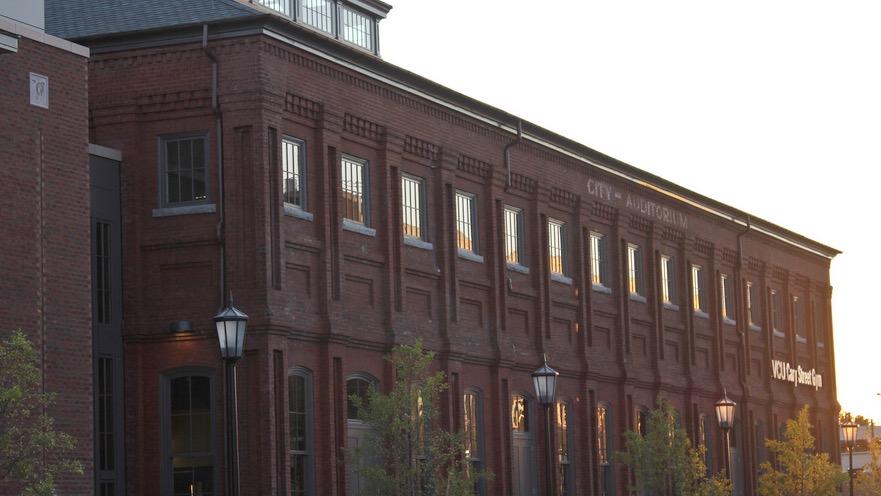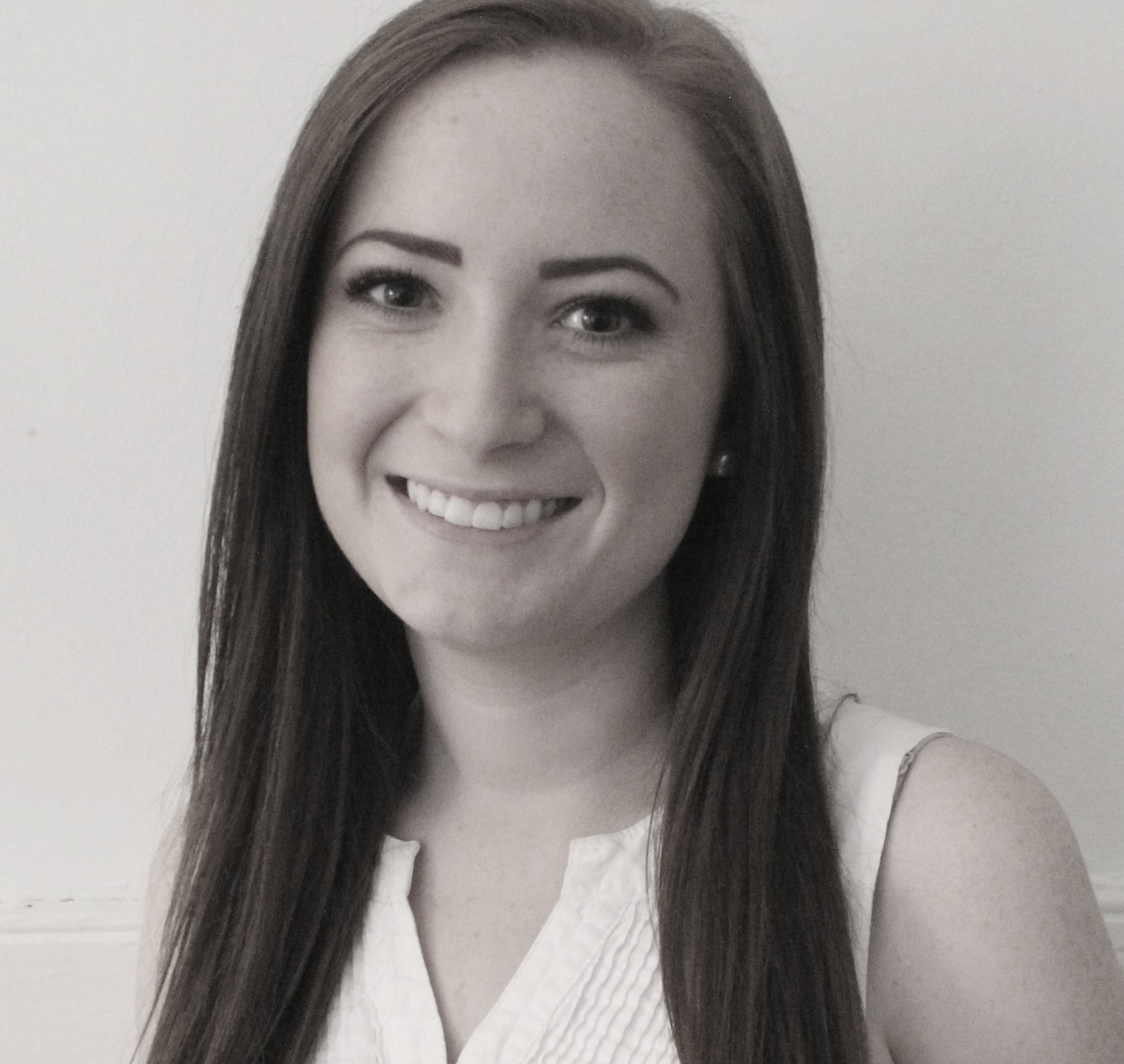130 years of history at VCU’s Cary Street Gym
A whole lot of other things happened in the former City Auditorium before the kids took over.

Photo by: Fire At Will [Photography]
The large red brick building stands prominent on bustling Cary Street. Long sleek windows line its side and a raised cupola-like glass roof peeks up from the top. The words “VCU Cary Street Gym” stand out, bright white against the brick; while the remnants of old lettering spell out “City Auditorium” just above them, a visual reminder of a different time.
These days, it seems as if every other street corner holds an old factory-turned-apartment-complex. While these renovations and restorations keep the background of our historic city alive in the modern age, many people are unaware of any historical context behind the Cary Street Gym building. After all, so much of the building seems so modern. Though this is partially true, the building itself has been around since approximately 1891 and has withstood a host of different purposes since then.
The Cary Street Gym building was originally designed by Richmond architect Marion J. Dimmock as a farmers market in the early 1890s for the residents of Sydney, an area you know as the Fan. The First and Second Markets had become increasingly popular, thus the Third Market was born to relieve some of the overcrowding.
There on Cary Street, the Third Market officially opened its doors in 1895. Adorned with 140 stalls and resembling the architecture of European department stores during the late 19th Century, it should have been a hit. However, shoppers never really caught on, and the First and Second Markets remained the most popular.
When the Third Market did not reach its expected potential, the City of Richmond decided to renovate. The building was reopened in 1907 as an entertainment venue and renamed the City Auditorium. This incarnation brought with it much more success–famous musicians, political campaigns, religious movements, and tournaments were all hosted in this very special building.
The first major event held at the auditorium, the Confederate Reunion of 1909, honored and remembered Southern soldiers. The Richmond News Leader would go on to meet there, as did the Richmond Musicians Club. The auditorium’s audiences were treated to the legendary talents of Russian composer Sergei Rachmaninoff, Polish pianist Jan Paderewski, composer John Philip Sousa, opera star Geraldine Farrar, humorist Will Rogers; and many more.
More controversial was Billy Sunday, a former White Sox baseball player who claimed to be a “recruiter” for God. He had choice words on many topics such as politics, women, and booze. He once went as far as saying that a saloonkeeper is worse than a thief because a thief steals your money but a saloonkeeper steals your honor. These disputable sermons couldn’t tarnish the image of the City Auditorium though, not after United States Presidents such William Howard Taft, Woodrow Wilson, and Herbert Hoover graced the stage to speak.
Although the City Auditorium was successful, it did have its issues. The only source of ventilation in the building was the windows. Therefore, those windows often needed to be cracked open to keep the temperature down while large crowds were packed inside, but while the windows were open, the noisy streets served as a major distraction for the audience members.
In 1927, the Mosque, now Altria Theater, opened its doors, and the City Auditorium could not compete with the new luxurious $1.65-million entertainment space. The City Auditorium was relegated to small-scale gatherings and high school graduations.
The auditorium holds a special place in the heart of author and Virginia Commonwealth Professor, Walter Griggs Jr. His mother, Dorothy Louise Feitig, was a member of John Marshall High School class of 1933, which was the very last graduating class to get their diplomas in the City Auditorium. “I recall her telling me that they mispronounced her last name” said Griggs. “This statement was in the yearbook: ‘Some of us will go to college, other will take up various burdens of life, all of us ever seeking higher things, and ever following our motto — keep on keeping on.'” The class’ motto also stands true of the building in which they graduated because the auditorium did not end there.
Next, the City Auditorium would be reborn as a sports arena where people filed in to root for their favorite wrestlers in epic matches. One of those wrestlers–Eddie Blanks, known as the “Red Devil” in his heyday, would go on to teach at VCU.
The sports arena days didn’t last long as World War II began to take a toll on Richmond. During the war, the Auditorium was used as a garage and repair shop for emergency vehicles, to be sold after the war’s end and used as a City warehouse for the next 40 years.
In 1978, the building was finally purchased by VCU to create the Cary Street Gym. The recreation center remained as it was until 2007. Connie Kottmann, who has worked for VCU recreational sports since October 2003, said “At that time it had a large hard surface floor marked for basketball and two courts. The main entrance was actually on Cary Street, at the address 911 West Cary Street”. Painting a more detailed picture of the old gym she went on to say, “A smaller mezzanine was built along the Cary Street side of the building interior for group exercise classes, and under that was a very small cardio equipment/weight room. There were also a couple of racquetball courts along the Linden Street side of the building upstairs.
“Offices were on the first floor near the entrance to the building,” she remembers. “They were rather dark and cramped, being in the interior of the building.” The University was experiencing a large surge in student population, and the facility needed to be renovated to keep up with demand. There were a few additions to the building, an annexation of a parking lot, outdoor basketball court, and Green Alley behind the gym, but VCU did their best to maintain the historic characteristics. “The original brickwork is intact,” says Kottmann. “And if you look carefully around the gym, you can see old carvings in some of the bricks close to what would have been street level. The original wood roof was replaced with modern, energy-efficient materials. The roofline was copied exactly from the original one to preserve the historic features of the building. The poles in the fitness center that help support the roof are in the same location as the original supports. The building exterior was renovated as closely as possible to the original design.”
An old carriage house was even salvaged in the process. “Additionally, the Outing Rental Center was originally a 19th century carriage house, which had been renovated into a residence across Green Alley directly behind the gym. This building was carefully moved across the street to its current location next to the field, so that it could be used to house the Outdoor Adventure Program.”
They also did their best to keep neighboring buildings in mind, says Kottmann. “The expansion design was developed to fit the scale of the surrounding neighborhood, hence the ‘porches’ on Cherry Street reflect the residential architecture across the street.”
The renovated Cary Street Gym included a 40-foot climbing wall, aquatic center with two pools, an indoor track, an 18,000 square-foot fitness center space, an indoor cycling classroom, a multi-activity center (indoor turf field), a four-court gym, a flexible group exercise classroom, classroom and seminar room space, and expanded office space. The gym sees approximately 4,000 entries per day during the school year. Kottmann also explains that the building is LEED-certified Gold, “the second highest certification for energy efficiency and use of sustainable materials and building materials,” she says proudly. “Cary Street Gym has won numerous architectural awards, and was named second most impressive college recreation center by Best Value Schools in 2013.”
This exquisite historical building that houses the recreational facility for an entire, huge university has seen a lot in its many lives–farmers, composers, performers, presidents, preachers, and graduations. But if we’re careful, its past will never be forgotten.
— ∮∮∮ —
Sources
- Griggs, W. (2012). The Richmond City Auditorium. In Hidden history of Richmond. Charleston, SC: History Press.
- The Cary Street Gym: A Brief History. (2010, October 4). Retrieved November 11, 2015
- Famous ‘Booze’ Sermon. (n.d.). Retrieved November 11, 2015
- Theater History. (n.d.). Retrieved November 11, 2015
- Worsham, G. (2012, December 2). Richmond’s Second and Third Markets. Retrieved November 11, 2015
-
Recommend this
on Facebook -

Report an error
-

Subscribe to our
Weekly Digest






There are 2 reader comments. Read them.